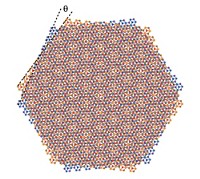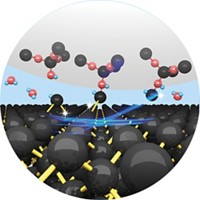Advertisement
Grab your lab coat. Let's get started
Welcome!
Welcome!
Create an account below to get 6 C&EN articles per month, receive newsletters and more - all free.
It seems this is your first time logging in online. Please enter the following information to continue.
As an ACS member you automatically get access to this site. All we need is few more details to create your reading experience.
Not you? Sign in with a different account.
Not you? Sign in with a different account.
ERROR 1
ERROR 1
ERROR 2
ERROR 2
ERROR 2
ERROR 2
ERROR 2
Password and Confirm password must match.
If you have an ACS member number, please enter it here so we can link this account to your membership. (optional)
ERROR 2
ACS values your privacy. By submitting your information, you are gaining access to C&EN and subscribing to our weekly newsletter. We use the information you provide to make your reading experience better, and we will never sell your data to third party members.
Surface Chemistry
Contact charges flip expectations
Pairs of surfaces taking like charges confound researchers
by Neil Savage, special to C&EN
June 11, 2018

Contact electrification—the proper name for what’s commonly called ”static electricity”—happens when two surfaces are brought together then separated. Any child who has ever rubbed a balloon on her head then watched as strands of hair rose up is familiar with it. Despite its familiarity, there’s very little scientific understanding of the mechanisms behind the phenomenon. Now one group of researchers has deepened the mystery, discovering that surfaces often don’t charge as expected. The team finds that when certain inorganic materials are brought into contact, both surfaces can develop the same charges instead of producing opposite charges (J. Phys. Chem. C 2018, DOI: 10.1021/acs.jpcc.8b02478).
Contact electrification forms the basis of technologies as old as photocopying and as new as nanoelectric generators. It even plays a role in how sandstorms form and has been known to cause equipment jams and explosions in industrial processes. When a pair of surfaces makes contact and separates, the law of conservation of charge says that one surface ought to become positively charged while the other becomes negatively charged. But in the new study, researchers at the National University of Singapore found that with certain pairings involving inorganic materials, both surfaces take on the same charge, either both positive or both negative. “Our results do, at least initially, seem to contradict theory,” says Siow Ling Soh, a chemical engineer at NUS.
The team had been studying the fundamental mechanism of contact electrification and so were testing inorganic surfaces, some coated with organosilane functional groups. “We were constantly getting results that we could not understand,” Soh says.
They found that when they brought together two pieces of mica, both took on positive charges. The same was true of silicon, sodium chloride, aluminum oxide, magnesium aluminate, zinc selenide, and potassium bromide. When they brought together two pieces of quartz or calcium fluoride, both surfaces charged negatively.
They also found that touching mica to the other positively charging inorganic materials or to organic surfaces, such as mica coated with organosilane groups or a sheet of polyethylene glycol diacrylate, left both surfaces with positive charges. When quartz contacted calcium fluoride, polystyrene, or polyvinyl chloride, both surfaces charged negatively. Touching quartz to mica, however, resulted in negatively charged quartz and positively charged mica.
Further investigation revealed that charge conservation was maintained: Initially the same-charging surfaces took on opposite charges, but the polarity of one would flip approximately one second later for most pairings. “We do not fully understand the mechanism,” Soh says. “Because we found changes in the chemical composition of the surface of the inorganic materials after leaving the materials in air, we believe air is involved in the switch of polarity.” The researchers plan to investigate the process further.
Advertisement
Daniel J. Lacks, a biochemical engineer at Case Western Reserve University, says the paper “is an exciting new finding that will open new doors towards understanding contact charging.” Scientists generally can’t predict the direction of charging based on material properties and don’t even know what is being transferred—electrons, ions, or bits of material—to generate the charge, he says. It may be, Lacks says, that adsorbed water is becoming ionized and carrying charge. Understanding how the process works could lead to better designs of devices that use, or want to avoid, such electrification.
Last year, Lacks and his colleagues used molecular dynamics simulations to predict charge distributions in water confined between layers of quartz and alumina (J. Phys. Chem. C 2017, DOI: 10.1021/acs.jpcc.7b04044). “I think that the experimental findings of Fang, et al., are a manifestation of the phenomenon we described in our theory paper,” he says. Soh agrees that humidity in the air may play a role, but doubts that it’s the only mechanism involved.




Join the conversation
Contact the reporter
Submit a Letter to the Editor for publication
Engage with us on Twitter